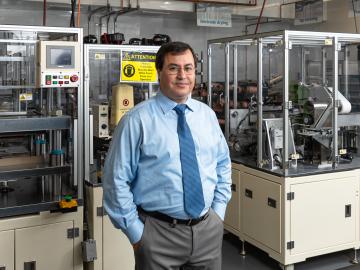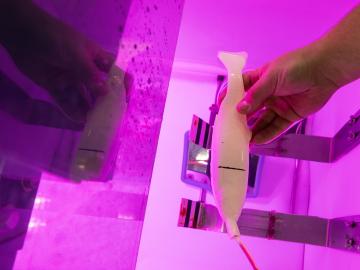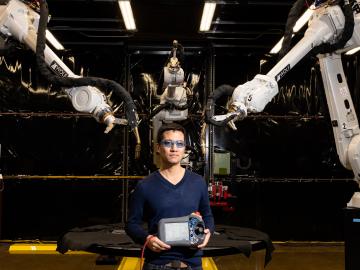
Filter News
Area of Research
- Advanced Manufacturing (1)
- Biology and Environment (6)
- Computational Biology (1)
- Energy Science (27)
- Fusion and Fission (3)
- Isotopes (1)
- Materials (15)
- Materials for Computing (5)
- National Security (4)
- Neutron Science (7)
- Nuclear Science and Technology (4)
- Quantum information Science (3)
- Supercomputing (26)
News Topics
- (-) 3-D Printing/Advanced Manufacturing (15)
- (-) Artificial Intelligence (9)
- (-) Big Data (7)
- (-) Composites (1)
- (-) Computer Science (36)
- (-) Energy Storage (13)
- (-) Microscopy (7)
- (-) Nanotechnology (7)
- (-) Security (6)
- (-) Space Exploration (3)
- Advanced Reactors (5)
- Bioenergy (16)
- Biology (17)
- Biomedical (19)
- Biotechnology (4)
- Buildings (2)
- Chemical Sciences (4)
- Clean Water (5)
- Coronavirus (15)
- Cybersecurity (5)
- Environment (29)
- Exascale Computing (4)
- Frontier (1)
- Fusion (11)
- Grid (6)
- High-Performance Computing (10)
- Isotopes (12)
- ITER (1)
- Machine Learning (2)
- Materials (4)
- Materials Science (19)
- Mathematics (2)
- Mercury (4)
- Molten Salt (1)
- National Security (4)
- Neutron Science (24)
- Nuclear Energy (23)
- Physics (11)
- Polymers (4)
- Quantum Computing (1)
- Quantum Science (10)
- Summit (11)
- Transportation (14)
Media Contacts

In the race to identify solutions to the COVID-19 pandemic, researchers at the Department of Energy’s Oak Ridge National Laboratory are joining the fight by applying expertise in computational science, advanced manufacturing, data science and neutron science.

Ilias Belharouak is leading ORNL’s research efforts in investigating new materials for solid-state batteries, which can double the charging capacity of lithium-ion batteries, commonly used today for electronic devices such as cell phones.

Hydropower developers must consider many factors when it comes time to license a new project or renew an existing one: How can environmental impacts be mitigated, including to fish populations?

Scientists at the Department of Energy’s Oak Ridge National Laboratory have developed a new method to peer deep into the nanostructure of biomaterials without damaging the sample. This novel technique can confirm structural features in starch, a carbohydrate important in biofuel production.

We have a data problem. Humanity is now generating more data than it can handle; more sensors, smartphones, and devices of all types are coming online every day and contributing to the ever-growing global dataset.

Each year, approximately 6 billion gallons of fuel are wasted as vehicles wait at stop lights or sit in dense traffic with engines idling, according to US Department of Energy estimates.

As the second-leading cause of death in the United States, cancer is a public health crisis that afflicts nearly one in two people during their lifetime.

Peter Wang is focused on robotics and automation at the Department of Energy’s Manufacturing Demonstration Facility at ORNL, working on high-profile projects such as the MedUSA, a large-scale hybrid additive manufacturing machine.

The formation of lithium dendrites is still a mystery, but materials engineers study the conditions that enable dendrites and how to stop them.

A team from the ORNL has conducted a series of experiments to gain a better understanding of quantum mechanics and pursue advances in quantum networking and quantum computing, which could lead to practical applications in cybersecurity and other areas.


